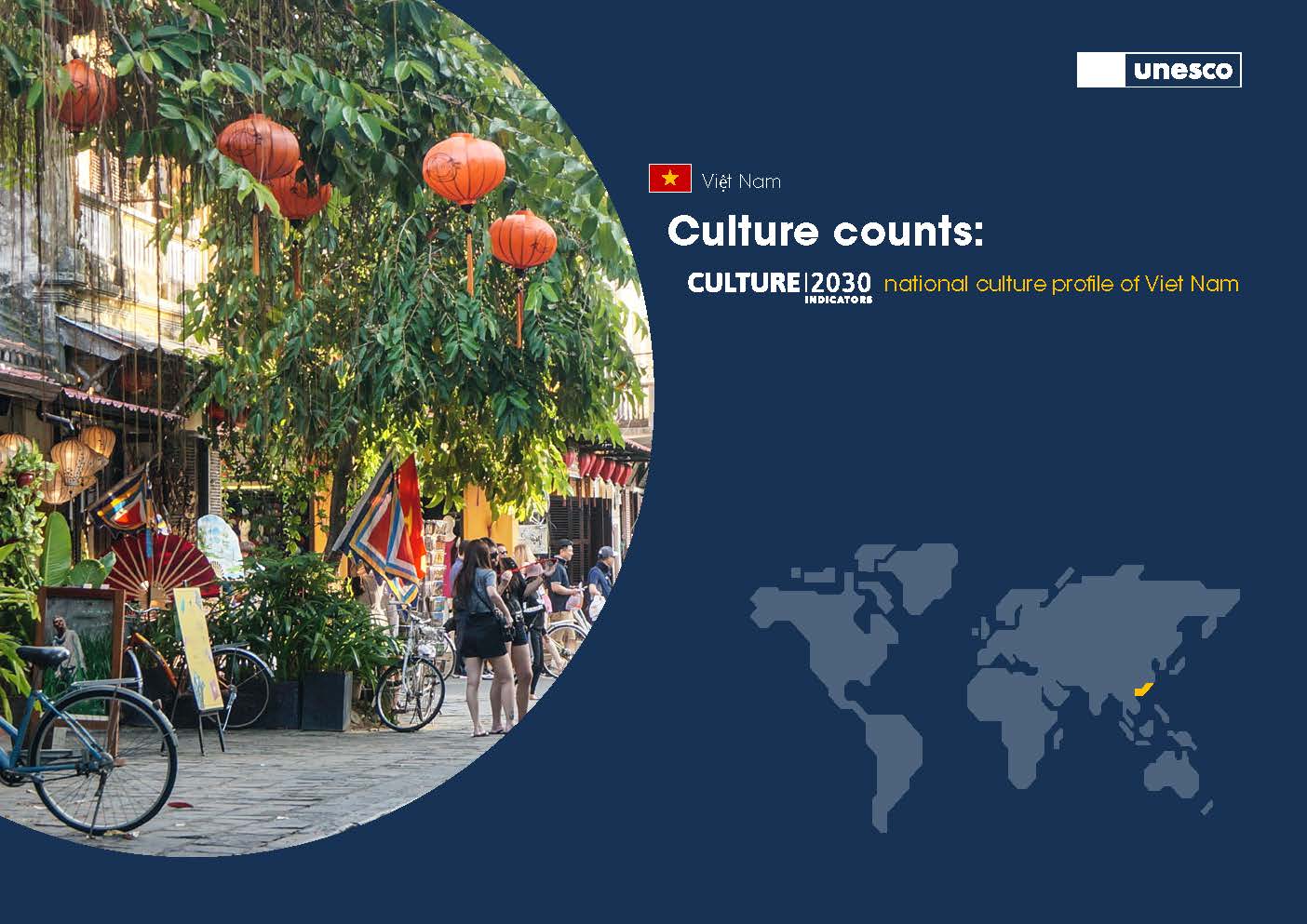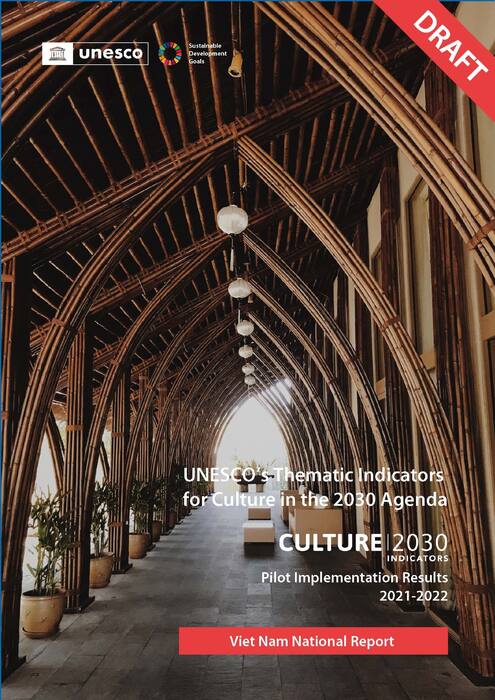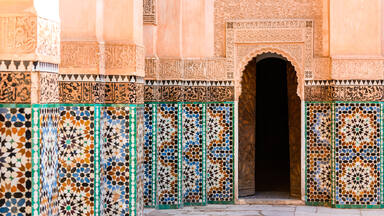Located on the western slopes of the Grand Atlas, 350 km south of Casablanca and 170 km west of Marrakech, the medina of Essaouira - a crossroads city and multicultural melting pot - was listed as a World Heritage Site in 2001. As part of a national policy to rehabilitate medinas and Ksars, Essaouira's Development and Safeguarding Plan (DSP) defines a global vision for the city's development, with an emphasis on preserving the buildings.
The project was led by the Ministry of Culture, Youth and Sports at the national level and ran from October 2021 to July 2022. Urban level implementation for the city of Essaouira occurred alongside the national implementaiton with the support of the Muncicipality of Essaouira. The implementation teams were accompanied by UNESCO and a kick-off workshop was held on 17 and 18 February 2022, and brought together 91 participants from 63 stakeholders, including representatives of national and local authorities for the city of Essaouira, universities, civil society organizations, the private sector and other entities working in the field of culture.
The workshop introduced the methodology of the UNESCO Culture|2030 Indicators framework, during the workshop, the implementation teams, participants and experts collaborated together to define the framework for implementing the project by drawing up an inventory of existing cultural policies, as well as an identification and mapping of data sources and a list of stakeholders. Workshop participants were assigned indicators to contribute data to according to the specific skills of each institution. The finalized and validated indicators were then uploaded to the Culture|2030 Indicators Data Bank. Analysis of the results gave rise to exchanges between the implementation teams and UNESCO, and sometimes necessitated a review of the data collection and a few corrections to harmonize the results.
A follow-up workshop was held in Essaouira-Beyt Dakira on 31 March & and 1 April 2022, attended by national and local teams and focal points. The advisor to His Majesty the King and founding president of the Essaouira-Mogador association, a representative of the governor of Essaouira province and the president of the Essaouira commune contributed to the debate.
Implementation concluded in July 2022 with the organization of a restitution workshop to present and validate the results, share key messages and highlight culture’s contribution to sustainable development. The resitution workshop brought together a total of 52 participants, including 33 from the national level and 19 from the city of Essaouira. It provided an opportunity to discuss the approach, results and recommendations, promoting results dissemination to encourage policy action and advocated for commitments from stakeholders to focus on strengthening data collection, measurement and monitoring for culture.
Culture Counts: Culture|2030 Indicators urban culture profile of Alajuela

For the first time, a publication series titled 'Culture counts: The Culture|2030 Indicators Culture Profiles' uncovers and offers evidence of the profound impact of culture on sustainable development. Read the issue for Essaouira.
Culture|2030 Indicators urban report of Alajuela

The summary results, key findings, analysis, and recommendations are based on the field document titled 'Culture|2030 Indicators National Report of Essaouira'.
Expenditure on heritage
A first measurement attempt suggests that in 2019, the public effort devoted to heritage will amount to 511 DH/inhabitant.
Sustainable management of heritage
While the institutional and political framework for protection, safeguarding and management is largely in place, implementation of the Development and Safeguarding Plan (DSP) is still pending, and partnerships with the private sector are still non-existent.
Climate adaptation & resilience
The Department of Water & Forests has set up a system to combat silting in Essaouira.
Cultural facilities
The 13 venues, representing 34% of the total number of cultural facilities, confirm the city's organization around culture and tangible and intangible heritage.
Open space for culture
With over 70% of open public spaces dedicated to culture, Essaouira hosted 29 annual events in 2019.
Culture in GDP
Data not available. This indicator could not be measured.
Cultural employment
Data not available. This indicator could not be measured.
Cultural businesses
The limited data collected indicates a concentration of cultural enterprises in tourism and the creative industries.
Household expenditure
Data not available. This indicator could not be measured.
Trade in cultural goods & services
This indicator is measured only on a national level.
Public finance for culture
Data not available. This indicator could not be measured.
Governance of culture
Data not available. This indicator could not be measured.
Education for Sustainable Development
This indicator is only calculated at the national level.
Cultural knowledge
The public museum, Beyt Dakira and the Essaouira - Mogador association are organizing activities to raise young people's awareness of heritage, diversity and intercultural dialogue.
Multilingual education
More than 2/3 of the timetable is dedicated to multilingualism, in primary and lower secondary schools.
Cultural & artistic education
With 42.1% of total hours, 7.5 points higher than at national level, cultural education plays a very large role.
Cultural training
Although there is no "specifically cultural" teaching in post-secondary education, cultural modules are integrated into existing courses of study.
Culture for social cohesion
This indicator is only calculated at the national level.
Artistic freedom
This indicator is only calculated at the national level.
Access to culture
Data not available. This indicator could not be measured.
Cultural participation
Cultural participation is virtually unknown for both indoor and outdoor activities.
Participatory processes
This indicator is only calculated at the national level.
-
The city's character is built around its urban heritage, for which there is an institutional and political framework (2) and solid public expenditure (1). Several institutions provide work and funds for its protection (12) but it is lacking an integrated global vision of resources and related activities. Silting is a battle against global warming (3). Outside the medina, few buildings are built using traditional techniques. Numerous traditional spaces are used for cultural activities, performances and craft markets, creating a strong network of cultural infrastructures (4).
-
The shortcomings of the city's economic statistics stem from an absence of data on wealth (6) and employment (7) generated by culture, as well as the limited number of cultural enterprises, and the fragility of the cultural and tourist economy (8).
-
Formal secondary education in Essaouria includes more hours dedicated to culture than on a national level (16).
-
The only participation data concern the number of library and museum visits, which are difficult to translate into visitor numbers. Libraries were the most resilient to the restrictions of the pandemic.
Concepts of sustainable development lie at the core of the UNESCO Culture Conventions and programmes, each of them bringing a specific perspective or focus in line with its individual scope and conceptual framework. With the adoption of the 2030 Agenda, all of the Conventions have incorporated relevant SDGs within their implementation and monitoring mechanisms by aligning their concepts and identifying specific SDGs or Targets to be integrated into their results framework.
The UNESCO Culture|2030 Indicators framework integrates data from reporting on UNESCO Culture Conventions and programmes. Periodic reporting is one of the core monitoring mechanisms of the UNESCO Culture Conventions. The date of Viet Nam’s participation in UNESCO reporting is recorded by last submission in the timeline below.
Date of participation in UNESCO Reporting by last submission.
Convention for the Protection of Cultural Property in the Event of Armed Conflict and its two protocols
Convention on the Means of Prohibiting and Preventing the Illicit Import, Expert and Transfer of Ownership of Cultural Property
Convention Concerning the Protection of World Cultural and Natural Heritage
Convention on the Protection of the Underwater Cultural Heritage
Convention for the Safeguarding of the Intangible Cultural Heritage
Convention on the Protection and Promotion of the Diversity of Cultural Expressions
Recommendation concerning the Protection and Promotion of Museums and Collections, their Diversity and their Role in Society
Recommendation on the Historic Urban Landscape
Recommendation on the Status of the Artist
Culture's transversal contribution towards the 2030 Agenda is captured in the framework. In Essaouira, culture's direct contribution in achieving progress towards the targets of the 2030 agenda is summarized in the following highlights.

SDG 4.4 Skills for employment
SDG 4.7 Knowledge for sustainable development
In secondary education, cultural education plays a major role (16): 42% of the educational timetable is devoted to culture, well above the national average. Non-formal vocational and continuing training includes traditional construction courses (2) and crafts (17). However, outside the medina, sustainable construction techniques are not observed.

SDG 11.4 Protect and safeguard cultural and natural heritage
SDG 11.7 Inclusive public spaces
Essaouira is directly dependent on its tangible and intangible heritage. The monuments in the medina are the focus of several action plans (2) and expenditure (1). Open, public spaces offer as many people as possible the chance to partake in cultural activities such as literary or artistic presentations. Additionally, craft markets set up and organized in these open public spaces place craftsmanship at the heart of local public life (5).

SDP 15.3 End Desertification and Restore Degraded Land
The town has introduced measures to limit silting. In the medina, many traditional sustainable building practices have been adopted (3).
Policy
- Broaden stakeholder participation in UNESCO's Culture|2030 Indicators and integrate the urban agency. In order to better share the results within the local community, it is recommended to draft and communicate the results of the program's workshops to the various institutions and associations concerned, in Arabic, French and Amazigh.
- Extend rehabilitations that integrate sustainable and natural traditional practices (lime, tadelakt, manjour, etc.) outside the medina to better safeguard heritage in the face of climate change (3).
- Give tourism operators a sense of responsibility and encourage them to support the various cultural and artistic activities that promote culture and safeguard tangible and intangible cultural heritage.
- Ensure a social study by professional researchers on the degree of awareness and responsibility towards tangible and intangible cultural heritage in both urban and rural areas, to raise awareness and better involve all stakeholders in its protection and management (2) including curators, businesses and citizens.
- Creation of a multidisciplinary committee within the Essaouira municipality, to analyze the initial results of the UNESCO Culture|2030 Indicators pilot program
Data
- Establish collaboration between the various institutions involved in cultural activities in order to identify sources, gather data and estimate the amount dedicated to culture
- Set up a database of companies to fill in the gaps in economic indicators, in terms of value (6), employment (7) and production.
